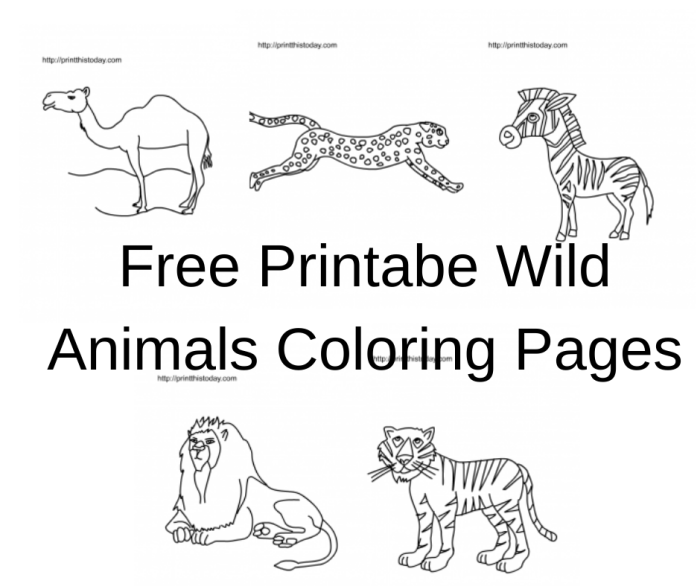Artistic Considerations and Techniques
Coloring page state bird and animal – Yo, let’s get into the artistic side of coloring these state bird and animal pages. It’s not just about filling in the lines; you can totally level up your coloring game with some dope techniques and different art supplies. Think of it as transforming a basic coloring page into a legit piece of art.This section breaks down some killer coloring techniques and shows how different art supplies change the vibe of your finished piece.
We’ll cover shading, blending, and layering, and then compare crayons, colored pencils, and markers. Get ready to unleash your inner artist!
Shading Techniques
Shading adds depth and realism to your drawings, making them pop. It’s all about creating the illusion of light and shadow. You can achieve this using different pressures with your coloring tool or by layering colors. For example, to shade a bird’s feather, you’d use darker shades in the areas where less light would hit, creating shadows and giving it a more 3D look.
Materials needed include your chosen coloring tool (crayons, pencils, or markers) and maybe a blending tool like a cotton swab or your finger (for softer blends).
Blending Techniques
Blending smooths out colors, creating a seamless transition between shades. This is super useful for creating gradients or realistic textures like fur or feathers. You can blend colors by layering them lightly and then gently rubbing them together with a blending tool. Crayons blend well by layering and then gently warming the surface with a hairdryer (adult supervision needed!), while colored pencils blend best with a colorless blender pencil.
Markers are tricky to blend, but layering can still create a nice effect. Materials: your coloring tools, blending stumps, cotton swabs, or even your fingers.
Layering Techniques, Coloring page state bird and animal
Layering involves applying multiple colors on top of each other to create richer, more complex colors and effects. This is where you can really get creative and build up your color intensity. For example, you could layer a light yellow over a base of orange to create a warm, sunset-like effect on the animal’s fur. You can also use layering to create texture, like adding darker lines to suggest the texture of scales or feathers.
Materials: your coloring tools. The key is to let each layer dry before adding the next, especially with markers to avoid smudging.
Comparison of Coloring Media
Crayons are great for bold, solid colors and easy blending with a little heat (again, adult supervision recommended!). They’re also super accessible and kid-friendly. Colored pencils offer more control and precision, allowing for fine details and subtle shading. They’re ideal for layering and creating realistic textures. Markers deliver vibrant, intense colors quickly, but blending can be challenging.
They’re awesome for creating bold Artikels and flat colors. The choice depends on your desired effect and personal preference; each offers unique advantages for your coloring page masterpiece.
Illustrative Descriptions of State Birds and Animals: Coloring Page State Bird And Animal
Yo, let’s dive into the deets on some state birds and animals. We’re gonna break down their killer looks, from feather textures to claw styles. Think of it as a nature’s runway show, but way more awesome. Get ready to geek out on some serious avian and mammalian style.
State Bird and Animal Physical Descriptions
This table breaks down the rad features of some state birds and animals. We’re talking serious texture, pattern, and overall swagger. Prepare to be amazed by Mother Nature’s sick designs.
| State | State Bird | State Animal | Detailed Physical Descriptions |
|---|---|---|---|
| California | California Quail | Grizzly Bear | The California Quail rocks a brown and buff plumage with a distinctive plume on its head. Its feathers have a soft, downy texture, providing insulation. The Grizzly Bear, on the other hand, boasts thick, coarse fur that varies in color from light brown to nearly black. The fur is incredibly dense, protecting it from harsh weather. Its massive claws are curved and powerful, perfect for digging and defense. |
| Texas | Northern Mockingbird | Texas Longhorn | The Northern Mockingbird’s feathers are a mix of gray, white, and brown, providing excellent camouflage. The texture is smooth and sleek, allowing for agile flight. The Texas Longhorn’s most striking feature is its massive horns, which can span up to eight feet tip-to-tip. Its coat is typically short and coarse, varying in color from reddish-brown to black. |
| Florida | Northern Mockingbird | Florida Panther | Similar to the Texas Mockingbird, the Florida bird’s feathers are smooth and sleek, mostly gray, white, and brown. The Florida Panther sports a tawny coat with dark spots. Its fur is short and dense, offering protection in the Florida heat. Its claws are retractable, sharp, and perfectly designed for hunting. |
| New York | Eastern Bluebird | White-tailed Deer | The Eastern Bluebird is known for its vibrant blue, rusty-red, and white plumage. The feathers are smooth and iridescent, reflecting light beautifully. The White-tailed Deer’s coat is reddish-brown in summer and grayish-brown in winter. Its fur is soft and relatively short, providing warmth without overheating. Its hooves are adapted for running and jumping. |
FAQs
What age group are these coloring pages best suited for?
These coloring pages can be adapted for various age groups. Simpler designs are ideal for younger children, while more complex designs challenge older children and even adults.
Where can I find images of state birds and animals for reference?
Reliable sources include state government websites, reputable wildlife organizations, and educational websites focused on natural history.
Can I sell coloring pages I create based on this guide?
Yes, you can, but be mindful of copyright restrictions regarding the use of specific images. Original artwork created based on your own designs is generally safe to sell.
What type of paper is best for these coloring pages?
Thicker paper, like cardstock, is recommended to prevent bleed-through, especially when using markers or watercolors.

